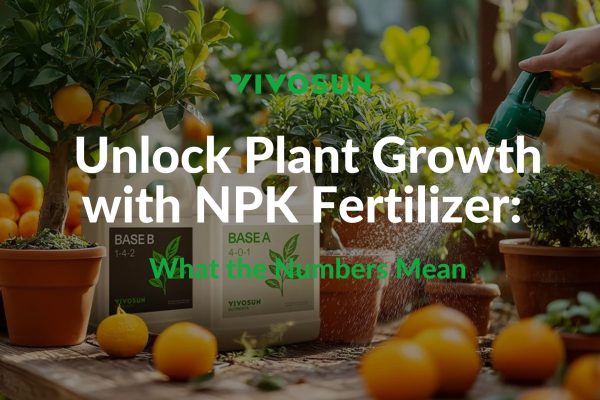Moldy weed, while often overlooked, poses significant health risks to cannabis consumers. It’s essential to understand what moldy weed is, how to identify it, and the potential consequences of smoking it. This article explores the topic in depth, providing valuable insights into recognizing, preventing, and dealing with moldy cannabis.
What is Moldy Weed?
Moldy weed is characterized by a grayish-white powdery or fuzzy coating, along with black or dark green splotches. Bud rot, a type of mold, causes cannabis buds to decay from the inside out, leading to dark, discolored, or mushy buds.

What Causes Mold on Cannabis?
Mold on cannabis plants can be a significant concern for growers, as it not only compromises the quality of the crop but also poses health risks to consumers. Here are some factors that contribute to mold growth:
1. High Humidity Levels:
Elevated humidity levels in the grow environment create a favorable breeding ground for mold spores. Cannabis plants are particularly susceptible to mold during flowering when humidity levels should ideally be kept lower to prevent moisture buildup around the buds.
2. Poor Air Circulation:
Inadequate airflow within the grow space can exacerbate humidity issues and create stagnant conditions where moisture accumulates. Proper ventilation and air circulation are essential for maintaining optimal humidity levels and preventing mold growth.
3. Watering Practices:
Overwatering or improper watering techniques can lead to excess moisture in the soil, which can promote mold growth on the plant’s roots and surrounding substrate. It’s crucial to water cannabis plants judiciously, allowing the soil to dry out slightly between waterings to prevent waterlogged conditions.
4. Improper Drying and Curing:
After harvest, inadequate drying and curing processes can leave residual moisture in the buds, providing an ideal environment for mold to thrive. Proper drying and curing techniques, including maintaining optimal humidity and airflow, are essential for preventing mold contamination during the post-harvest phase.
5. Poor Sanitation:
Mold spores can proliferate in a dirty or unhygienic grow environment, spreading from contaminated surfaces to healthy plants. Regular cleaning and sanitization of grow equipment, surfaces, and grow rooms can help minimize the risk of mold infestations.
6. Genetics:
Some cannabis strains may be more susceptible to mold than others due to genetic predispositions. Growers should select resilient and disease-resistant strains to mitigate the risk of mold contamination.
By addressing these factors and implementing proper prevention measures, growers can effectively minimize the risk of mold on their cannabis plants, ensuring a healthy and high-quality harvest.
Identifying Moldy Weed
Recognizing moldy weed is crucial for ensuring the safety of cannabis consumption. Visual cues such as discoloration, fuzzy texture, and a musty odor are indicative of mold presence. It’s essential to distinguish between mold and trichomes, the resinous glands that contain cannabinoids and give cannabis its potency.
Pictures of Moldy Weed
Visual aids are invaluable for identifying moldy weed. By familiarizing themselves with images of mold-infested cannabis, consumers can better recognize the signs of contamination. These pictures serve as a reference point for distinguishing between healthy and compromised cannabis, helping to avoid the risks associated with mold ingestion.




To determine if weed is moldy, thorough inspection is necessary. Examine the buds closely for any signs of mold growth, paying particular attention to areas with dense foliage. Mold may appear as white, gray, green, or black patches and may have a powdery or web-like texture. In addition to visual inspection, smell the cannabis for any unusual odors, as mold often emits a musty or damp scent.
Prevention of Mold on Weed
Preventing mold on cannabis is crucial for maintaining plant health and ensuring a high-quality harvest. Here are comprehensive strategies for preventing mold on cannabis, based on the provided sources:
Indoor Growing
1. Monitor Temperature and Humidity: Use a hygrometer to track levels, aiming for around 24℃(75℉) and humidity below 65%. Employ dehumidifiers if necessary.
2. Ensure Proper Air Circulation: Install fans and exhaust systems to prevent stagnant air. Space out plants for better airflow.
3. Maintain Cleanliness: Keep tools clean, especially before pruning, to avoid introducing mold spores. Enforce “grow-only” clothing to prevent contamination.
4. Regular Inspections: Check plants for signs of mold or disease.
5. Control nighttime Conditions: Keep cooling systems active at night to prevent humidity spider.
Outdoor Growing
1. Optimize Plant Placement:
Place plants in full sunlight to reduce humidity. Use portable container to move plants during bad weather.
2. Weather Protection:
Erect tarps during rainy periods. Install fans in greenhouses for airflow.
3. Plant Spacing and Genetics:
Space out plants and choose resistant strains.
General Practices
1. Proper Drying and Curing:
Dry buds thoroughly after harvest and cure them in airtight jars in a cool, dark place.
2. Environmental Control:
Maintain a clean facility with good HVAC system. Regulaly maintain HVAC equipment and use filtration or sanitization systems.
3. Hygiene and Quarantine:
Sanitize tools regularly and quarantine new plants or clones.
Dealing with Moldy Weed
If moldy weed is discovered, it should be handled with caution to prevent exposure to harmful spores. Avoid touching the mold directly and use gloves or a tool to dispose of the contaminated cannabis. Seal the moldy weed in a plastic bag and discard it in an outdoor trash receptacle to prevent further contamination. Clean any surfaces or storage containers that came into contact with the mold to prevent future growth.
What Happens if You Smoke Moldy Weed?
Smoking moldy weed introduces harmful fungi and toxins into the body, leading to a range of adverse health effects. Inhaling mold spores can irritate the respiratory system and exacerbate existing conditions such as asthma or allergies. Mycotoxins produced by certain molds can cause nausea, vomiting, and neurological symptoms, posing serious risks to overall health.
FAQs
- Can moldy weed be salvaged?
- It is not recommended to salvage moldy weed. Consuming moldy cannabis can pose serious health risks, so it’s best to discard any contaminated material.
- How does mold affect the taste of cannabis?
- Mold can impart a musty or unpleasant taste to cannabis, diminishing its flavor and aroma. Moldy weed may also produce harsh smoke when burned.
- Is it safe to consume cannabis with visible mold?
- No, it is not safe to consume cannabis with visible mold. Ingesting moldy weed can lead to respiratory issues, allergic reactions, and other health complications.
- Are there any health benefits to smoking moldy weed?
- There are no health benefits to smoking moldy weed. Consuming mold-contaminated cannabis can only result in adverse health effects and should be avoided at all costs.
Conclusion
In conclusion, the presence of mold on weed poses serious health risks and can compromise the quality of cannabis consumption. By familiarizing themselves with the signs of mold contamination and implementing proper storage practices, consumers can safeguard their health and enjoy cannabis responsibly. Remember, when in doubt, it’s always better to err on the side of caution and discard moldy weed to avoid potential health complications.








